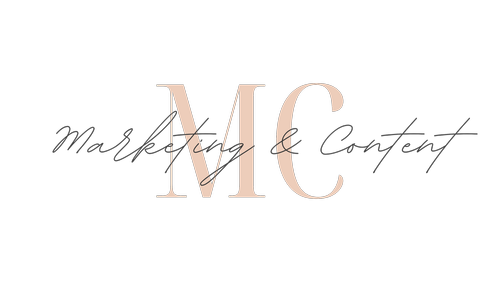How to Create a Content Calendar for Your Business to Show Up Online
In today’s digital landscape, consistency is key to establishing a strong online presence. A well-structured content calendar can be the backbone of your content strategy, helping you plan, create, and schedule your posts effectively. At MC Marketing & Content, we understand the importance of showing up online, and we’re here to guide you through the process of creating a content calendar that works for your business. Let’s dive in!
What is a Content Calendar? A content calendar is a scheduling tool that outlines the content you plan to publish across your online platforms—whether it’s your website, blog, social media channels, or email newsletters. It helps you organize your content ideas, set deadlines, and ensure consistency in your messaging. By having a clear plan, you can streamline your content creation process and engage your audience more effectively.
Why You Need a Content Calendar
1. Consistency: A content calendar ensures that you post regularly, helping you stay top-of-mind with your audience.
2. Organization: It allows you to keep track of what content is being published and when, reducing the last-minute scramble to produce posts.
3. Strategic Planning: With a calendar in place, you can align your content with your business goals, seasonal promotions, and relevant trends or events.
4. Collaboration: If you’re working with a team, a content calendar provides clarity and allows everyone to understand their responsibilities and deadlines.
5. Performance Tracking: A calendar allows you to review what types of content resonate with your audience, helping you refine your strategy over time.
Steps to Create Your Content Calendar
Step 1: Define Your Goals
Before you start planning content, clarify your business objectives. Are you looking to increase brand awareness, drive website traffic, generate leads, or improve customer engagement? Your goals will inform the type of content you create and how you measure success.
Step 2: Know Your Audience
Understanding your target audience is crucial for creating content that resonates. Conduct market research, analyze customer feedback, and identify their interests, challenges, and preferences. This insight will help you craft relevant and engaging content.
Step 3: Choose Your Content Types
Decide on the types of content you want to produce. Your options might include: - Blog posts - Social media updates (images, videos, stories) - Email newsletters - Webinars or live sessions - Infographics or eBooks - Podcasts Having a mix of content types can keep your audience engaged and cater to different learning preferences.
Step 4: Select a Calendar Tool
Choose a tool that suits your needs for organizing and scheduling your content. Options include: - Spreadsheets: Simple and customizable, spreadsheets (like Google Sheets or Excel) are great for tracking content ideas and deadlines. - Project Management Tools: Platforms like Trello, Asana, or Monday.com offer visual organization and collaboration features. - Dedicated Content Calendar Tools: Tools like CoSchedule or Hootsuite allow you to plan, publish, and analyze your content all in one place.
Step 5: Create Your Content Schedule
Determine how often you want to publish content. This may vary based on your resources and goals. A general guideline might include: - Blog posts: 1-2 times per week - Social media: Daily or several times a week - Email newsletters: Weekly or bi-weekly - Webinars or videos: Monthly Mark specific dates for each piece of content in your calendar, ensuring a good mix of topics and formats.
Step 6: Brainstorm Content Ideas
Gather ideas for your content. Consider: - Industry trends or news - Frequently asked questions from customers - Seasonal events or holidays - Behind-the-scenes looks at your business - Customer success stories or testimonials Use tools like Google Trends, BuzzSumo, or AnswerThePublic to identify popular topics in your niche.
Step 7: Assign Responsibilities
If you have a team, assign tasks for content creation, editing, graphic design, and publishing. Make sure everyone knows their roles and deadlines to ensure a smooth workflow.
Step 8: Monitor and Adjust
Once your content calendar is in motion, track its performance. Use analytics tools to assess engagement, reach, and conversion rates. Regularly review what’s working and what isn’t, and be prepared to adjust your strategy as needed.
Creating a content calendar is an invaluable step in showing up consistently online and engaging with your audience. By planning ahead, you can produce high-quality content that aligns with your business goals and resonates with your target audience. At MC Marketing & Content, we believe that a well-executed content strategy can significantly impact your online presence. So, roll up your sleeves, start brainstorming, and get ready to elevate your business’s digital footprint!

